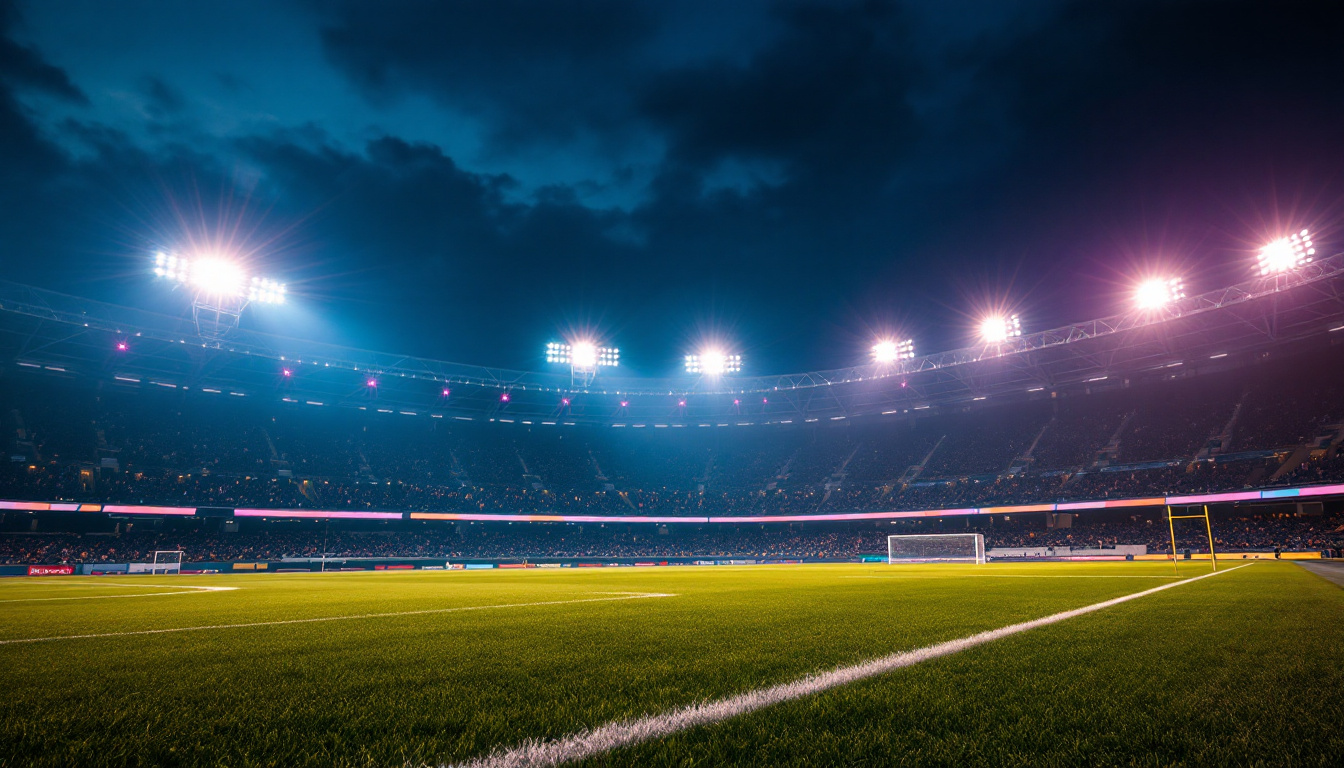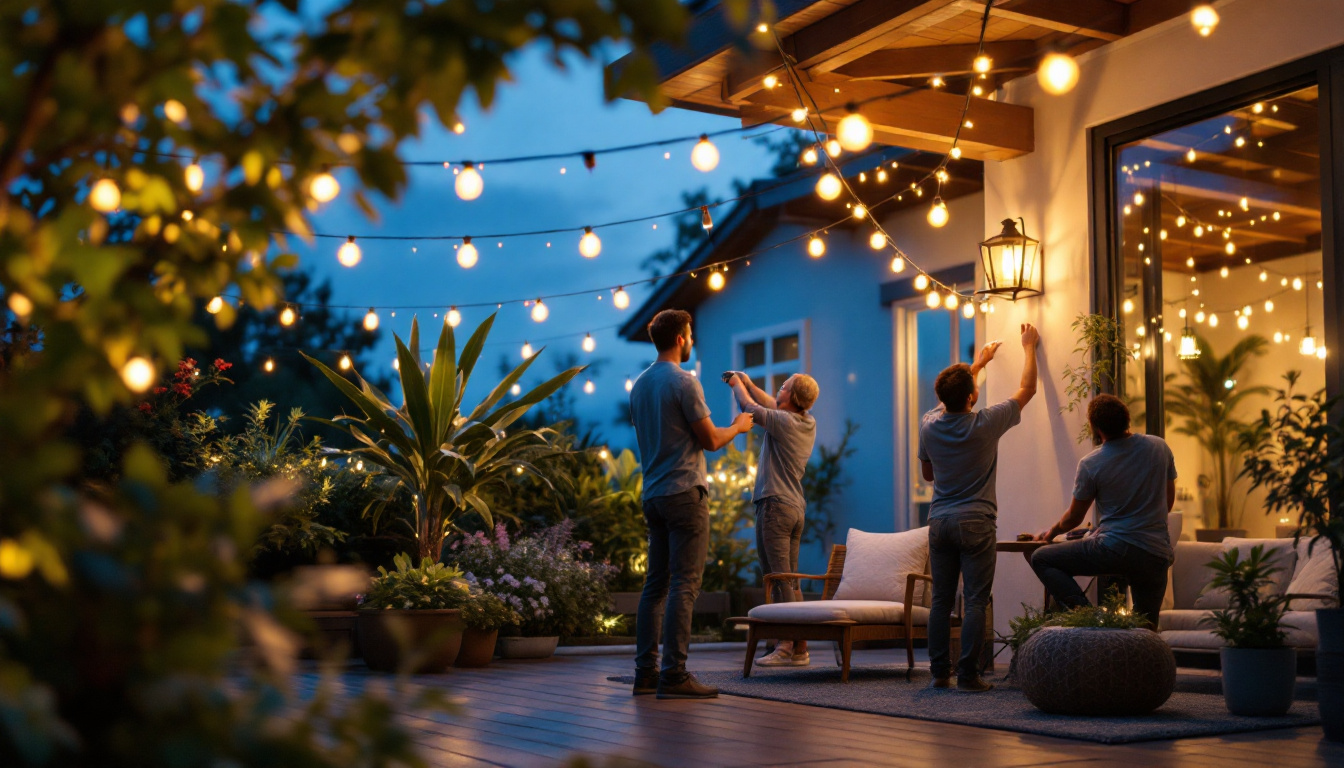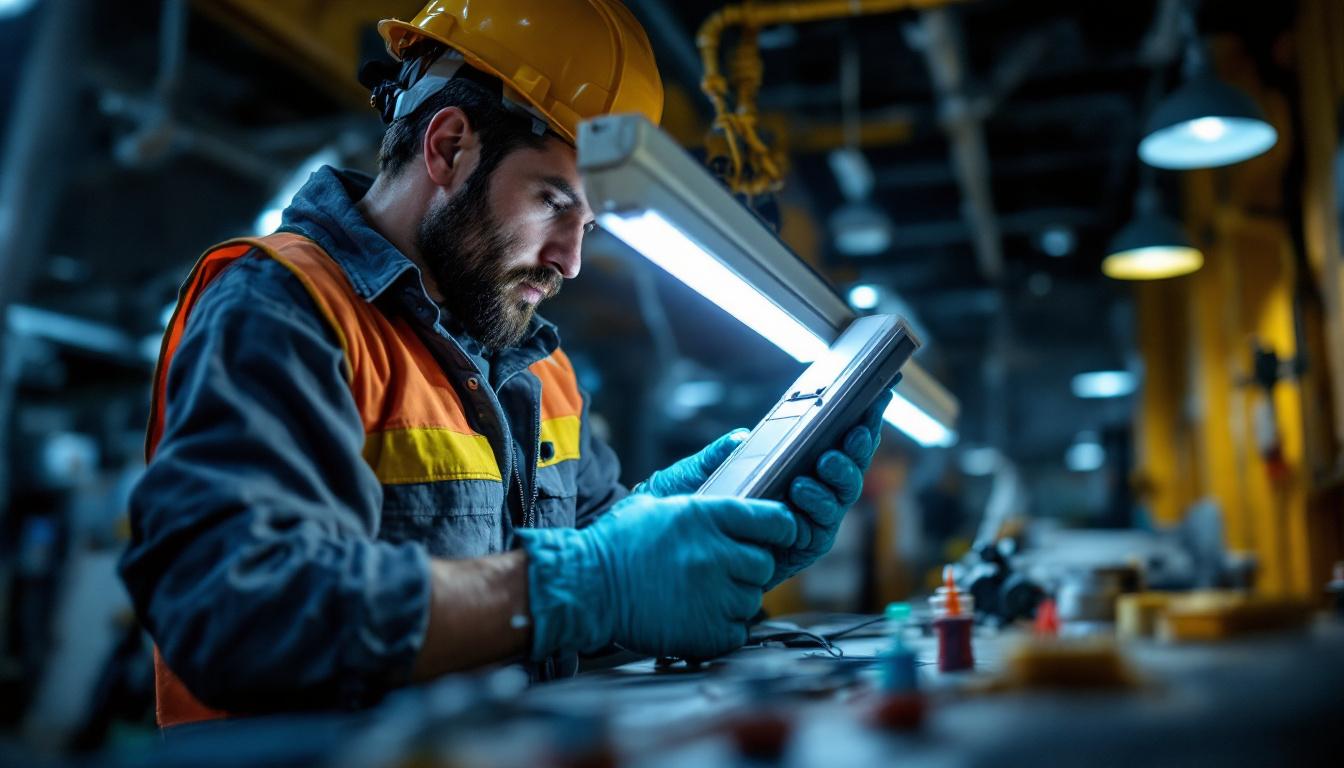
In the world of sports, lighting plays a crucial role in ensuring that athletes perform at their best while providing an enjoyable experience for spectators. As lighting contractors, understanding the intricacies of sports lighting can set your services apart and lead to successful project completions. This article offers essential advice tailored specifically for lighting contractors involved in sports facility projects.
Sports lighting is not merely about illuminating a field or court; it is about creating an environment that enhances performance and safety. Proper lighting can significantly affect how athletes perceive their surroundings, influencing their performance and focus. The right lighting can also help in reducing the risk of injuries by ensuring that players can see obstacles, markings, and other players clearly, thus allowing them to react quickly and effectively during play.
Moreover, effective lighting is essential for broadcasting events. High-quality lighting ensures that television audiences receive a clear and vibrant view of the action, which can impact the popularity of the sport and the financial success of the event. Well-lit games attract more viewers, which in turn can lead to increased sponsorship opportunities and higher ticket sales, making it a critical factor for both organizers and teams.
Different sports facilities have varying lighting requirements. For instance, a football field will have different lighting needs compared to a basketball court or a tennis stadium. Understanding these differences is crucial for lighting contractors to design effective lighting solutions. Each sport has its own unique dynamics, and the lighting must cater to those specific needs to ensure optimal visibility and performance.
Outdoor sports facilities typically require more powerful lighting fixtures to cover larger areas, while indoor facilities may focus on uniformity and glare reduction. Familiarizing oneself with the specific needs of each facility type is essential for delivering optimal lighting solutions. Additionally, considerations such as the height of the lighting poles and the angle of the lights can greatly influence the quality of illumination, ensuring that athletes can perform at their best regardless of the time of day or weather conditions.
When designing a lighting system for sports facilities, several factors must be considered. These include the type of sport, the level of play, and the expected usage of the facility. For example, professional sports venues require higher levels of illumination than community fields. Furthermore, the layout of the field or court can determine how light is distributed, necessitating a tailored approach to each project.
Another critical aspect is the color temperature of the lights. Warmer color temperatures can create a more inviting atmosphere, while cooler temperatures may enhance visibility and focus. Balancing these aspects is key to creating an effective lighting design. Additionally, energy efficiency is becoming increasingly important, with many facilities opting for LED lighting solutions that not only reduce electricity costs but also have a longer lifespan, contributing to sustainability efforts within the sports community. The integration of smart lighting systems, which can adjust brightness based on real-time conditions, is also gaining traction, providing further enhancements to the overall experience for both athletes and spectators alike.
A well-thought-out lighting plan involves more than just selecting fixtures. It requires a comprehensive understanding of the facility’s layout, the intended use, and the audience’s needs. The following sections outline essential steps in creating an effective lighting plan.
Before any design work begins, conducting a thorough site assessment is imperative. This includes evaluating the existing infrastructure, determining the layout of the playing area, and identifying any potential obstacles that could impact lighting.
During the assessment, consider factors such as the orientation of the field, surrounding structures, and natural light sources. This information will help in selecting the appropriate lighting fixtures and their placement for optimal performance. Additionally, it is beneficial to involve stakeholders, including coaches and players, in this phase to gather insights on their specific needs and preferences. Their feedback can provide valuable context that might influence the overall design and functionality of the lighting system.
Once the site assessment is complete, the next step is to calculate the lighting requirements. This involves determining the necessary illumination levels for the specific sport and the facility’s intended use. Standards set by organizations such as the Illuminating Engineering Society (IES) provide valuable guidelines for these calculations.
Consideration should be given to factors such as uniformity, glare control, and the distribution of light across the playing surface. Achieving the right balance is crucial to ensure both player safety and spectator enjoyment. Furthermore, it is essential to account for the different times of day and varying weather conditions that may affect visibility. For instance, evening games may require additional lighting to compensate for the loss of natural light, while overcast days might necessitate adjustments to maintain consistent illumination levels.
With a clear understanding of the lighting requirements, selecting the appropriate fixtures becomes paramount. LED technology has revolutionized sports lighting, offering energy efficiency, longevity, and superior performance. When choosing fixtures, consider their wattage, beam angle, and color rendering index (CRI).
Additionally, the fixtures should be durable enough to withstand outdoor conditions, especially for outdoor sports facilities. Opting for fixtures with weather-resistant ratings can help ensure longevity and reduce maintenance costs. It’s also worth exploring smart lighting solutions that allow for remote control and automation, enabling adjustments based on real-time needs. This can enhance energy savings and provide flexibility for different events, from casual practices to high-stakes tournaments. Moreover, integrating lighting with other facility systems, such as scoreboards and sound systems, can create a more immersive experience for both players and fans alike.
Proper installation is critical to the success of any lighting project. It not only affects the performance of the lighting system but also impacts safety and compliance with regulations. Here are some best practices for lighting contractors during the installation phase.
Safety should always be a top priority during installation. This includes following all relevant electrical codes and safety standards. Ensuring that all fixtures are securely mounted and that wiring is properly insulated can prevent accidents and ensure the longevity of the lighting system.
It is also essential to conduct regular safety inspections during the installation process. This proactive approach can help identify potential hazards before they become significant issues.
Once the installation is complete, thorough testing and commissioning of the lighting system are necessary. This involves checking for proper illumination levels, uniformity, and glare control. Adjustments may be needed to ensure that the lighting meets the specified requirements.
Involving the facility’s management team during this phase can provide valuable insights and ensure that the lighting system meets their expectations. Feedback from athletes and coaches can also be beneficial in making final adjustments.
After installation, ongoing maintenance is vital to ensure the lighting system continues to perform optimally. Regular maintenance checks can help identify issues before they escalate, ensuring the facility remains safe and functional.
Creating a maintenance schedule is essential for keeping the lighting system in top condition. This schedule should include regular inspections, cleaning of fixtures, and replacement of any burnt-out bulbs or damaged components.
In addition to routine maintenance, it is also beneficial to keep detailed records of all maintenance activities. This documentation can help in identifying patterns and potential issues over time, allowing for proactive measures to be taken.
As technology continues to evolve, staying informed about the latest advancements in sports lighting is crucial. Upgrading to newer, more efficient lighting solutions can improve performance, reduce energy costs, and enhance the overall experience for athletes and spectators alike.
Consider integrating smart lighting systems that allow for remote control and monitoring. These systems can provide valuable data on energy usage and performance, enabling more informed decisions regarding maintenance and upgrades.
As sustainability becomes increasingly important, lighting contractors must consider the environmental impact of their projects. Implementing eco-friendly practices can not only benefit the environment but also appeal to clients who prioritize sustainability.
Choosing energy-efficient lighting solutions, such as LED fixtures, can significantly reduce energy consumption. These fixtures not only consume less power but also have a longer lifespan, resulting in lower waste and maintenance costs.
In addition to selecting efficient fixtures, consider incorporating renewable energy sources, such as solar panels, to power the lighting system. This approach can further reduce the facility’s carbon footprint and operational costs.
light pollution is a growing concern, particularly for outdoor sports facilities. Implementing designs that minimize light spill and glare can help reduce the impact on surrounding areas and wildlife.
Using shielding techniques and selecting fixtures with appropriate beam angles can help direct light where it is needed while minimizing unnecessary illumination of adjacent properties. This consideration not only enhances the facility’s reputation but also fosters good relationships with the community.
Sports lighting is a multifaceted field that requires careful consideration and expertise. For lighting contractors, understanding the unique needs of sports facilities, adhering to safety standards, and staying informed about technological advancements are essential for success.
By focusing on effective design, installation, maintenance, and environmental considerations, lighting contractors can deliver exceptional lighting solutions that enhance the performance of athletes and the experience of spectators. As the demand for high-quality sports lighting continues to grow, embracing these principles will ensure that contractors remain competitive and respected in the industry.
Ready to elevate your sports lighting projects with the best in class lighting solutions? Look no further than LumenWholesale. We provide lighting contractors with spec-grade lighting products that meet the highest industry standards, ensuring every game is played in the best light. With unbeatable wholesale prices and free shipping on bulk orders, you can trust LumenWholesale to brighten your facilities while keeping costs down. Don’t compromise on quality or value; explore our selection and start saving today.

Discover essential compliance guidelines and expert insights for lighting contractors working with LED lights in bathrooms.

Discover why lighting contractors should prioritize black outdoor lighting in their projects.

Discover effective strategies for training your team in the art of outdoor patio lighting with string lights.

Discover essential ballast connection fluorescent tips for lighting contractors.